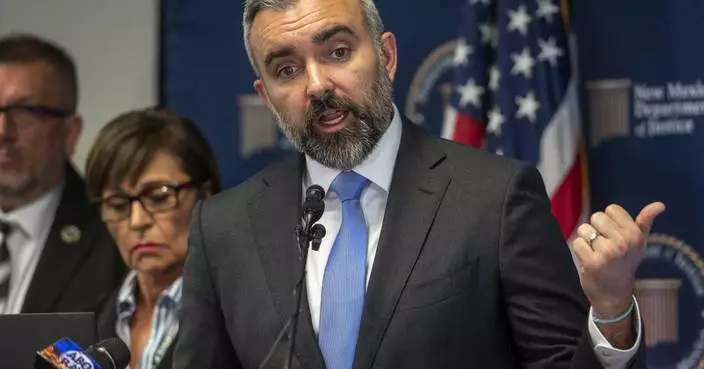Little Esmae made a dramatic decline just hours after complaining that her legs were aching.
A young mum has relived the terrifying moment when doctors warned that her toddler daughter may never walk again – just hours after she complained of leg ache.
On 16 December 2017, Rachel Wallace, 28, should have been excitedly preparing little Esmae, now three, for Christmas, listening to carols and excitedly stashing presents under the tree.
Instead, mum and daughter were at Sheffield Children’s Hospital worriedly waiting to discover how a seemingly healthy child could lose the ability to walk, almost overnight.
An MRI scan soon helped them to diagnose Esmae, of Sheffield, South Yorkshire, with transverse myelitis – where the body’s immune system is mis-programmed and attacks itself, causing the spinal cord to become inflamed.
Forced to spend Christmas in hospital, where Santa made a bittersweet visit to her bedside, fortunately, Esmae is now doing “amazingly,” according to Rachel, who said: “It all happened so fast, it was shocking. Hearing doctors say Esmae may never walk again was just horrendous.
“She ended up staying in hospital until the end of January, but Santa came to see her, which meant the world.”
Rachel added: “Now, she’s just amazing. To look at her, you’d never know anything had happened. Though we’re very aware she’s at risk of a relapse, we want to keep her life as normal as possible and give her those chances every child should have.”
Rachel, who has another daughter, Autumn, four months, with her courier partner Callum Morgan-Browne, 27, recalled how, save for a bug she had been fighting off around seven weeks earlier, Esmae seemed perfectly healthy in the run up to her terrible ordeal.
Then, on 15 December 2017, she woke with conjunctivitis, a common condition causing redness and inflammation of the eye.
Consulting a doctor, Rachel was advised to take Esmae home to rest and to keep the affected area clean.
“Because her eyes were sticking and uncomfortable, she wasn’t sleeping well, so I joined her and sat on the floor beside her bed to comfort her,” said Rachel, who has had to give up her job as a cleaner to care for her daughter.
“I stayed with her all night, and in the morning, said to her, ‘Esmae, my legs are killing,’ where I’d been sat up. She replied, ‘Mine too.’ At the time, I thought she was being sweet and trying to copy me, but looking back, I now know that was the start of what was to come.”
Although she briefly rallied, Esmae then dramatically declined over the next two days.
Rachel added: “She was crying in pain, and could barely walk. She crawled along the floor.”
Terrified, Rachel raced Esmae to Sheffield Children’s Hospital, where she was admitted and pumped full of high-dosage painkillers.
“She’s not a fussy child at all, not one to put things on for attention. I knew something was seriously wrong, and I kept telling the doctors that,” said Rachel. “Her consultant was amazing though. I cannot thank him enough.”
In time, an MRI scan led to Esmae’s official diagnosis of transverse myelitis.
According to The Brain and Spine Foundation, symptoms of the condition include muscle weakness, back pain and numbness.
While symptoms develop slowly over time in many cases, in some, like Esmae’s, they can appear rapidly, within just 24-48 hours.
After receiving her diagnosis, struggling to breathe, Esmae was whisked down to critical care.
“It was all a horrible waiting game. As the condition is so unpredictable, we had no idea how it would affect her,” said Rachel. “We were even warned she may never walk again.”
“I was desperately going over things in my mind to work out what had caused it. Had it been the bug she’d had, or a flu jab she’d been given a couple of days previously, or where she’d hurt her back falling off the sofa during a tantrum?
“But all doctors could tell me was that it was no one thing that had caused this. Her body had just begun to attack itself.”
Stuck in hospital on Christmas Day and even seeing in 2018 on the ward, Esmae worked tirelessly to build her strength up with physiotherapy and steroid medication.
Then in the early stages of her pregnancy with Autumn, Rachel remains eternally grateful to The Sick Children’s Trust, a charity who provide ‘home from home’ accommodation for the families of youngsters in hospital.
They organised for her and Callum to stay at nearby Magnolia House, so they could be on-call, ready to be at their daughter’s bedside 24 hours a day.
Rachel said: “The Sick Children’s Trust were amazing. I was in my early stages of pregnancy with Autumn and wasn’t well, so them sorting out Magnolia House for us gave me somewhere to nap if I needed to, or go to have meals too. Esmae loved it up there, there was a little play corner for her – and she especially loved getting ice lollies from the freezer.”
Finally, at the end of January 2018, Esmae was allowed home.
But her road to recovery was not easy and she has since suffered two relapses – one in February, after she began walking “as if she were drunk,” and another in June.
Sadly, her immune system is now severely compromised, meaning her parents must go above and beyond to protect her from bugs, but she is doing remarkably well.
Now Rachel is sharing her story so she can thank The Sick Children’s Trust for their help in her hour of need.
“Winter is a difficult time, as there are so many bugs about, and I’m terrified of having to take Esmae back to hospital,” she said.
“She’s been left with some side effects, like having to walk with splints where her hip is weakened, causing her to drag her feet and fall over. But she’s absolutely amazing as we’re all so proud of her.”
For information, visit www.sickchildrenstrust.org
FORT LIBERTY, N.C. (AP) — Forced to do more with less and learning from the war in Ukraine, U.S. special operations commanders are juggling how to add more high-tech experts to their teams while still cutting their overall forces by about 5,000 troops over the next five years.
The conflicting pressures are forcing a broader restructuring of the commando teams, which are often deployed for high-risk counterterrorism missions and other sensitive operations around the world. The changes under consideration are being influenced by Russia's invasion of Ukraine, including lessons.
U.S. Army Special Operations Command, which bears the brunt of the personnel cuts, is eyeing plans to increase the size of its Green Beret teams — usually about 12 members — to bring in people with more specialized and technical abilities. One possibility would be the addition of computer software experts who could reprogram drones or other technical equipment on the fly.
But similar changes could ripple across all the military services.
“A 12-person detachment might be upgunned,” said Gen. Bryan Fenton, commander of U.S. Special Operations Command. He said an Air Force pilot, Navy ship driver, cryptologist or cyber expert may be needed as battlefields become more challenging and high tech.
He said in an interview that the U.S. is “taking a lot of lessons learned out of the experience in Ukraine," including by special operations forces working in the country. The U.S. has no troops on the ground there.
The bulk of the cuts stem from the Army's decision to reduce the size of its force by about 24,000 and restructure its troops as the U.S. shifts from counterterrorism and counterinsurgency to focus more on large-scale combat operations. The Army also has struggled to meet recruitment goals and had to reduce the overall size of its force.
Army Special Operations Command, which Fenton said is absorbing about 4,000 cuts ordered over the past year and a half, is looking at bringing in people with high-tech skills.
“I think one of the questions is how much can you teach a Green Beret versus some of these specialties are extremely technical,” said Maj. Gen. Patrick Roberson, deputy commander of the command at Fort Liberty in North Carolina. “You can teach a person about how to use a drone. But then to say, I want to have a software engineer program that drone, that’s something different.”
The cuts to Army special operations forces have triggered some congressional opposition, including during recent Capitol Hill hearings where lawmakers noted the impact at Fort Liberty. Fenton also spoke bluntly at the hearings about the growing demand for special operations forces.
He said U.S. regional commanders around the world consistently want more and that cutting the forces means “we’ll be able to meet less of what they demand. And I think we owe the secretary of defense our assessment as we go forward.”
For years, during the Iraq and Afghanistan wars, the number of special operations forces and support staff grew, particularly since they were often spread out in small, remote bases where they needed additional security and other logistical help. Now, Pentagon leaders say the numbers can shrink a bit.
Fenton said a cut of about 2,000 personnel in special operations was ordered by the department about a year and a half ago, including about 750 in the Army. That was followed this year by a cut of 3,000 in Army special operations. The cuts are to be spread out across five years.
“So the real Army reduction in totality is almost 4,000, and the remaining 1,000 will come from the joint force, SEALs, Marine raiders, other Army units,” said Fenton.
For Roberson, the question is where to cut his Army troops. “Cuts have a way of crystallizing your focus and your view of, okay, what’s important to me? What’s the future? What do I really need to have," he said in an interview in his Fort Liberty office.
He and other Army leaders said a significant percentage of the special forces cuts are in slots that are already open so would not affect existing personnel. Roberson estimated that at least 30% of the cuts are in those open jobs.
For other reductions, he said he is looking for redundancies, including among trainers and instructors. Army leaders have also said that psychological operations and civil affairs, both part of the Army command, are facing cuts.
“At the end of 20 years of war, it’s always a good time to look back and say, OK, what did I have when this started? What did I learn? What did I do, what was important to me?” Roberson said.
And even if all teams are not boosted in size, he said the Army needs to be able to quickly augment them with specialists. In some cases a mission might need just a couple technical support members, and other times could need six or seven, he said.
More broadly, as his forces absorb the cuts, their training must also be changed or increased to include more technology, robotics or sensors and signals intelligence information, Roberson added. Right now, he said, his troops are experimenting with the various options at the National Training Center in California and out in the field in Iraq and Syria.
Adaptability is the key, he said, and “we have to figure out how we're going to make the most of this.”

Special Forces candidates assigned to the U.S. Army John F. Kennedy Special Warfare Center and School patrol through a wooded area during the final phase of field training known as Robin Sage in central North Carolina, July 9, 2019. U.S. special operations commanders are having to do more with less and they're learning from the war in Ukraine, That means juggling how to add more high-tech experts to their teams while still cutting their overall forces by about 5,000 troops over the next five years. (Ken Kassens/U.S. Army via AP)

A soldier from the U.S. Army John F. Kennedy Special Warfare Center and School checks a compass while completing a land navigation course during Special Forces Assessment and Selection near Hoffman, N.C., May 7, 2019. U.S. special operations commanders are having to do more with less and they're learning from the war in Ukraine, That means juggling how to add more high-tech experts to their teams while still cutting their overall forces by about 5,000 troops over the next five years. (Ken Kassens/U.S. Army via AP)

FILE - The new Fort Liberty sign is displayed outside the base on Friday, June 2, 2023 in Fort Liberty, N.C. U.S. special operations commanders are having to do more with less and they're learning from the war in Ukraine, That means juggling how to add more high-tech experts to their teams while still cutting their overall forces by about 5,000 troops over the next five years. (AP Photo/Karl B DeBlaker, File)












